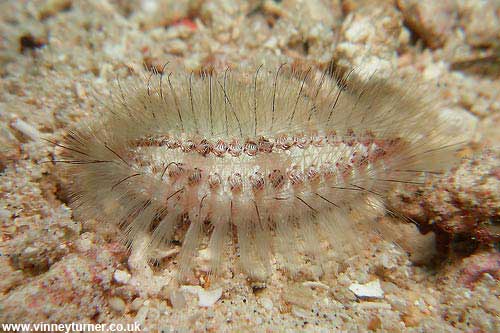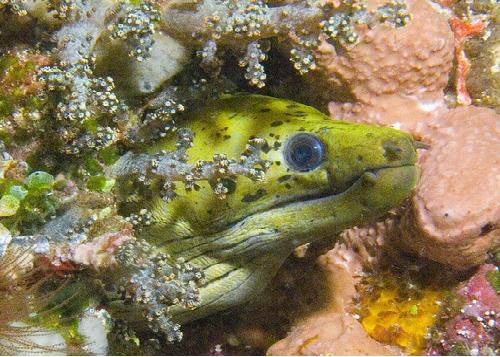Indonesia Diving
Indonesia Dive Regions
- Sumatra
- Bali & Lesser Sundas
- Moluccas
- West Papua
- Sulawesi
- Borneo (Kalimantan)
Indonesia Diving
Bali & Lesser Sundas
Many boats diving the Lesser Sundas and Komodo depart from Lombok
As you travel east from Bali through the archipelago known as The Lesser Sundas (or Nusa Tenggara), the diving gets progressively more and more exciting... and the facilities get more basic. With the exception of the magnificent Amanwana resort on the tiny, pristine island of Moyo just north of Sumbawa, comfortable places to rest one's head at night become far and few between.
For the intrepid diver, this can offer a world of new and exhilarating experiences... and a few challenges too! The alternative is a liveaboard.
Several companies offer liveaboard diving cruises through the area, most focussing on the spectacular Komodo National Marine Park, home to the infamous dragon of the same name. A few go further, passing along the north coast of Flores to the remote islands of Alor and Wetar which some believe to be home to some of the best diving in the World.
Boats take several forms from converted wooden fishing boats to steel hulled ships or large motor yachts. Perhaps the most romantic, however, are the traditional Pinisi sailing schooners (pronounced "Finisi"), originally built by master boat builders in Sulawesi as trading ships for Buginese sailors, but now adapted to create deluxe liveaboard dive boats.
For those seeking the thrill, the land route offers numerous cultural encounters along the way and some spectacular scenery. A few small dive operators do exist in Flores and West Timor, and one especially inventive father/son duo run a periodic dive "camp" in Alor, setting up temporarily for a month at a time in a local hotel, contracting local fishing boats to get them to the best dive spots.
Such adventurers may get the chance to visit the splendid multi coloured lakes of Keli Mutu volcano, traditional villages and extraordinary spider rice fields (see picture) of Flores, and pick up some fine examples of ikat from local weavers.The Lesser Sundas
The numerous islands which make up The Lesser Sundas - including Komodo, Flores, Lombok, Sumbawa, Sumba and Timor - vary enormously in flora and fauna. Most visitors never make it as far as these far-flung, little-populated islands - except to visit Komodo and tourism is in it's infancy.
Bali
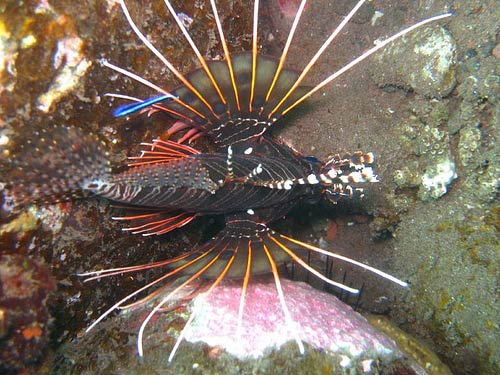
The Balinese have reason to feel lucky the "Island of the Gods" truly is a ...

The Balinese have reason to feel lucky -- the "Island of the Gods" truly is a tropical paradise; lush and fertile with a kind climate that is both warm and brings rain (in moderate doses) throughout the year. And much of that exquisite beauty extends beneath the waves. Coral reefs once almost surrounded Bali. However, for many years, blocks of coral were dug up and used to build the numerous Hindu temples on the island (three for every village). This has left much of the east coast exposed to the oceans which have been gradually washing away the once-beautiful sandy beaches. Happily all is not lost. The practice has now ceased and the remaining reefs still offer haven to a multitude of coral and fish species. Bali does not, perhaps, offer the world class diving found in other parts of Indonesia, but few places on earth can match the spirituality and romance of this gorgeous island while still satisfying the scuba diver's craving to get wet and see fish.
Bali has three primary dive locations, two on the north coast and the other around islands off-shore to the south east. On the north coast there is Pulau Menjangan and the Liberty Wreck at Tulamben. In the south there are several good sites around the islands of Nusa Penida and Nusa Lembongan -- famous for frequent sightings of the bizarre looking mola mola, or sunfish, a mysterious large, flattened fish with elongated dorsal fins. Lembongan also provides a quiet haven from the overcrowded beaches of southern Bali.
Dive types and environments
Wrecks, drifts and dropoffs. Suitable for all levels
What you will see
Soft and hard corals, numerous reef fish including sharks, large Hawksbill Turtles, shoals of pelagics such as tuna, mackerel and jacks and, if lucky, a lone manta or even a mola mola.
Best way to go
Drive and Dive Bali. Plan to share your time between inland exploration and diving.
Symbiosis can help you to plan a route avoiding the main tourist centres of Kuta, Nusa Dua and Sanur, taking you to hidden boutique resorts and guest houses up in the hills and to lesser-known beaches. In this way you can spend your holiday discovering the rich cultural delights and exquisite scenery, exploring the rice terraces, temples and numerous artisan villages, interspersed with days diving at the best of Bali's dive spots.
For longer stays
* Add a trip to the neighbouring island of Lombok to discover a very different culture and to dive at the Gili Islands
* Consider taking a liveaboard dive cruise east to the Komodo National Park for some world class diving and an encounter with the infamous Komodo Dragon
Lombok
Lombok is a beautiful, small island just East of Bali. Taking its name from a spicy red pepper used liberally in local cuisine, Lombok has long been a melting pot of Indonesian art, music, and tradition.Recently developed tourist facilities draw visitors to Lombok \'s serene beaches, soaring mountains and old temples.
Lamok island is quite different from its neighbor Bali. Its climate is drier and the land more rugged. It is only about half as crowded. Lombok has excellent secluded white beaches, however, most diving and snorkeling takes place at the nearby Gili Islands, which lie to the northwest of Lombok in the strait between Lombok and Bali.
Gili Islands
The Gili Islands are very close to Senggigi, Lombok\'s main beach resort. Around Sanggigi beach in east Lombok there are also a couple of dive sites, where there is a lot of currents and swells and large pelagics such as sharks, rays and makerels.
Senggigi beach stretches along several kilometers and it is where you will find beautiful white sandy beaches, and attractive bays with mountains in the background. The countryside is most attractive at the Northern end of Senggigi. A trip to the Gili Island usually takes around an hour; therefore, the variety and high standards of accommodation in Senggigi may form an ideal base for diving at the Gili islands.
Three tiny islands off the Northern coast which are magnificent with white sand beaches and fascinating coral formations. In the sea, divers can find rare species of giant clams, turtles, sharks, manta rays, and blue spotted sting rays gracing the warm coastal waters.
Gili Trawangan is the biggest of the three islands and the busiest one. It has good diving and snorkeling spots near the beach, which can be reached without a boat. One of its major attractions is the different types of sea turtles. They can also be seen very easily by snorkeling. Gili Meno is not as developed for tourists as the other islands, which makes it rather quiet and peaceful.
Gili Air is the closest one to Lombok. It is suitable for the travelers who look for relaxation and peace. There are very good snorkeling spots near the jetty. Turtles can be seen very frequently.
South Lombok
There are some dive spots off Kuta beach, however, due to very strong currents and usually high waves very few operators offer dives there.
Komodo National Park
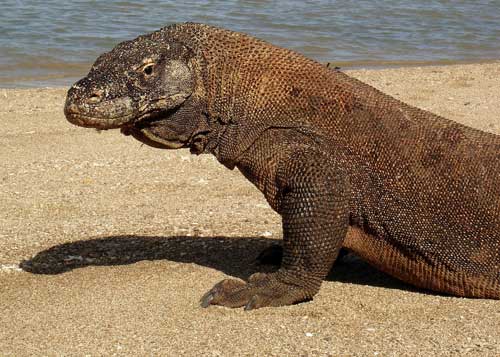
Komodo is a World Heritage Site best known for its most ancient inhabitant the infamous ...

Komodo is a World Heritage Site best known for its most ancient inhabitant - the infamous Komodo Dragon. The world's largest lizard, a unique species found only on these islands, the dragon can grow to 3 metres long and weigh over 150 kg. Young dragons move fast (they can outrun a dog) and are voracious carrion eaters.
However the Komodo National Park and surrounding area also boasts one of the world's richest marine environments. With over 260 species of reef building coral, 70 species of sponge, marine worms, mollusks, echinoderms, crustaceans, over 1000 species of cartilaginous and bony fish, marine reptiles, and marine mammals. Some notable marine species include pygmy seahorses, anglerfish, nudibranchs, manta rays, dolphins, whales, dugongs, Napolean wrasse and groupers. With deep seas to both the north and south of the Komodo archipelago, upwellings bring and distribute the nutrients basic to the underwater food chain, feeding polyps and small carnivores, right up to our favourite characters, the whaleshark, mantas, dogtooth tuna and large barracudas.
On land, and in addition to the famous Komodo Dragon, the Komodo National Park hosts a rare diversity of animals including Sunda deer, wild buffalo, wild boar, the macaque monkey and wild horse. For bird watchers, there have been over 150 bird species identified including the sulphur-crested cockatoos, imperial pigeons, white-breasted sea eagles and maleos.
The unique biosphere of Komodo was born in the ancient volcanic eruptions that formed Sumatra, Java, Bali and the islands lying eastward to Papua New Guinea. As a consequence, the topography of the islands are striking and unique. Komodo Island itself is 35km in length and 15km wide. It is mountainous with an average altitude of 500-600m, the highest peak being Satalibo (735m) in the north. The majority of the island is covered in lontar palm savannah with remnants of rainforest and bamboo forests. The irregular coastline is marked by rocky headlands and sandy bays against a backdrop of soaring volcanic cliffs.
Komodo's Dive Sites
Mentjeng Wall
On the southern tip of the volcanic island of Sangeang, "Mentjeng Wall" is quite possibly the most prolific nudibranch and invertebrate site in all of Komodo. The wall itself, which drops down to 60 feet, is covered in vibrantly colored crinoids, corals, and colonial anemone. The real action, however, begins where the wall ends, as Mimic octopus, ornate ghost pipefish, cuttlefish, and a variety of nudibranchs make the blacksand slope their home.
Pink Beach
The most unpredictable site in Komodo, "Pink Beach," minutes from the ranger station, is swept daily by ferocious currents. Dive at the right time, however, and you'll marvel at manta Rays, sleeping sharks, orangutan crabs, multitudes of feaf scorpion fish, pygmy seahorses and Coleman shrimp.
Mark's Sharks
Rising from the deep, this pinnacle attracts some of the largest fish to roam the Indian Ocean. Best dived on a slack current, escape to the backside for some frenzied action as sharks, jacks, tuna, and rays all vie for supremacy. During August and September we sometimes see mola-mola, the ocean sunfish, at this site.
Black Magic
The newest jewel in Komodo, "Black Magic" rests at the foot of small freshwater spring on the Northeastern corner of Sangeang. This black sand slope has produced innumerable ghost pipefish, spindle cowries, painted and clown frogfish. On either side of the sand is a lush coral wall with lengthy sea-whips, colorful crinoids and numerous murcella sp. fans, crawling with Komodo's most famous critter, hippocampus bargibanti -- the playful pygmy seahorse.
Toro Langkoi
Mantas, mantas everywhere (October, November and early December). Toro Langkoi, in the south of Komodo, has some of the best wide-angle opportunities in all of Komodo. Rimmed by two towering walls covered in untouched hard corals, this bowl is the focus of literally thousands of schooling fish that cascade endlessly.
Copycat Copycat
Perhaps the oddest dive in Komodo, "Copycat2" boasts no coral deeper than 10 ft. But below this line lies the realm of unique critters, the most bizarre undoubtedly being the mimic octopus. Patrol this sandy "muck" in search of the magic log, covered in crinoids, hosting an array of ornate ghost pipefish, frogfish and marble-eyed eels.
Cannibal Rock
Rinca Island , east of Komodo. Made famous by photographers Burt Jones and Maurine Shimlock, "Cannibal Rock," a small pinnacle in a deep bay in southern Rinca, is a diver's delight. The rock is literally crawling with bizarre critters, including three colors of frogfish, pygmy seahorses, octopus and feaf scorpion fish. It is surrounded by fish of all types during the day. Perhaps the best night dive in Komodo, "Cannibal Rock" lights up nightly with appearances from bumblebee shrimp, unusual decorator crabs, and spanish dancers.
Making your way east and north you'll be astounded by the sizes of the purple gorgonian fans, some over two metres tall. These fans are home to the pygmy seahorse, always a thrill to spot. Dense thickets of lime green whip coral ferns and yellow and white spiral corals mark your trail. Be on the lookout for yellow-ribbon sweetlips -- endemic to these parts -- and sweeps of gold-striped fusiliers. Green turtles are also frequent visitors to this site to feed on the soft corals. The shallows are loaded with feather stars of all colours, and blue tunicates add ultraviolet shades to the already colourful dive site kaleidoscope.
Altogether, Cannibal Rock is a truly world-class dive site and one of the top sites in Komodo liveaboard diving.
Gili Lawa
Gili Lawa Laut , north Komodo. This pinnacle just breaks the surface off the northern side of the two small islets to the north of Komodo's main island. It is another excellent dive site and very similar topographically to the famous GPS Point. The reef is packed with bronze- and rust-coloured sponges and soft tree corals. You'll see black snappers, large cuttlefish, pyramid butter fly fish, and several red octopi.
Strong currents normally prevent dives on Gili Lawa and the correct conditions must exist before undertaking any dive here. One of the delights of diving in Indonesia is that the area is so large and the dive sites so numerous that it is possible to come across fantastic sites which are still relatively unchartered.
Pillarsteen
Padar Island , east of Komodo.Pillar Rock lays a couple of kilometres to the south east of Padar Island, between Komodo and Rinca islands. The best plan at this top notch Komodo liveaboard dive site is to drop in at the southern-most point and let the strong current and surge take you west. To the south lie deeper waters and a series of caves, chimneys and rocky outcrops. Here you'll find large midnight snappers, huge boxfish, and six-banded angelfish. To the west Pillarsteen's walls are painted yellow, green and orange by the dense colonies of soft corals. Yellow and white sea squirts are found here in the thousands. With funnel-shaped bodies and spout-shaped open mouths, these colourful creatures can easily be mistaken for aquatic versions of pitcher plants. In the shallow waters the wall ends and becomes a sloping reef. Here are masses of gigantic soft brown leather corals ( Scleronephthya , Sinulana and Sarchphyton ). You'll see tiny bright yellow sea cucumbers attached to most of the corals. They look surprisingly like members of the sea slug family, but pentacta lutea are indeed holothurians. Strong surges can make this area hazardous among the rocks and corals, especially with the presence of highly toxic and brightly coloured red and purple fire urchins.
Tatawa Island
North Komodo. Strong prevailing north-south currents dictate where you enter at this dive site, some 30km east of Komodo's northern-most point. When the current runs south, chances are you'll drop into a 2- or 3-knot current, possibly on the north east corner of the island. Turtles are everywhere and you can expect to see many as you navigate the site.
Before you leave the currents behind watch out for the grey reef sharks and black-tail barracuda. Manta rays also make occasional guest appearances.
Further south and slightly west of Tatawa Island is a rocky islet called Batu Besar, meaning big stone, and this is the location of a dive site called 'Current City'. East of the Batu Besar, as the name suggests, currents can regularly exceed three knots, making for some serious drift diving. If the current is this strong along the east face, however, it is usually fairly calm along the west. The west face of Batu Besar offers a series of steep drops to about 30 metres, and several interesting coral caves. The soft coral cover is very good, and there are lots of fish, including large schools of sweetlips. Sharks are common here, too, as are turtles and very large fantail stingrays.
Yellow Wall of Texas
Rinca Island, east of Komod. The Yellow Wall of Texas is a wall running down the east coast of Nusa Kode to the south of Rinca Island. The shallows are very rich in fish life, particularly plankton feeders. Fork-tailed fairy basslets swarm around the drop-offs in great orange and purple schools. Pairs of colourful butterfly fish forage in the reef crannies for small crustaceans or coral polyps. Clown triggerfish, perhaps the most distinctively marked of all the reef fishes with its black body, round orange mouth, yellow face band, white-spotted underbelly and yellow tail, stake out their territory along the face of the reef. In the deeper waters a couple of white-tip reef sharks may swing around to give you a close look. Red snappers with bright yellow eyes will keep a wary distance, and green turtles often row by. The Yellow Wall of Texas is best dived in the afternoon, when the sun provides more natural lighting.
End of the World
Tala Island, Komodo Island. Tala is a tiny, angular island in Langkoi Bay, just south of the southernmost part of Komodo Island. It is one of the most southern Komodo liveaboard diving sites. The inner passage between Tala and Komodo proper is shallow and has ripping currents, but the southern point of the island has The End of The World to the west in very deep water. Here is a sheer wall of rock, broken up by some nice cuts, overhangs, and sandy shelves down to about 40m, and from there on a flat, black plain. There are white-tip sharks, rays, morays and rich coral growth in the cuts and shelves. The flat areas of the wall are covered with extensive fields of marigold cup corals, a beautiful and vivid effect against the dark rock.
GPS Point
Gili Banta Island, 10km north east of Komodo. Located off the north east point of Gili Banta, the famous GPS Point is a must on any Komodo liveaboard cruise. Many considered it the best dive site in north Komodo. The top of this small sea mount rises to just 5 metres of the surface but it attracts lots and lots of fish. GPS Point is often swarming with dogtooth tuna, and big schools of barracuda and surgeonfish. The soft coral growth at GPS Point in particular is excellent, and the entire surface of the sea mound is richly overgrown with invertebrates. The deep waters provide the opportunity for encounters with hammerhead sharks and Napolean wrasse as well as the more common white-tips and nurse sharks. Strong currents often to three knots sweep the top of the mount. Things settle down around 25 metres or so, but this is not really a beginner's dive. Visibility here is variable, and can drop below ten metres due to plankton, but it is usually clearer at depth.
Red Beach
Pantai Merah Beach, Komodo Island. Red Beach is located just in front of the old dragon feeding station in east Komodo, directly across the bay from Komodo Village. Snorkeling here is excellent over a healthy shallow reef. Diving is at the reef edge where the bottom drops down to 25 metres. Thousands of fish of every colour and shape are here including regal angelfish, checkerboard wrasse and masked unicorn fish, against a beautiful backdrop of acripora corals, gorgonian fans and sponges.
White Angels
Gili Banta Island, 10km north east of Komodo. Off the northwest point of Gili Banta, White Angels steep reef and wall are at their best in the early morning when pelagic fish are out to feed on the bounty provided by the swift currents. From a shallow sheltered bay the reef quickly drops to 35m and then beyond. You'll need to swim against a current over a short distance to gain the corner of the bay, but once around it all plain sailing as you drift along in the strong currents with queen mackerel, yellowtail tuna and grey reef sharks. Fifteen minutes or so into your dive you'll come into a shallower reef section away from the currents. Here you'll find a fantastic array of sponges and corals, lionfish, batfish and oval-spot butterfly fish along with countless and colourful nudibranches.
Gilis
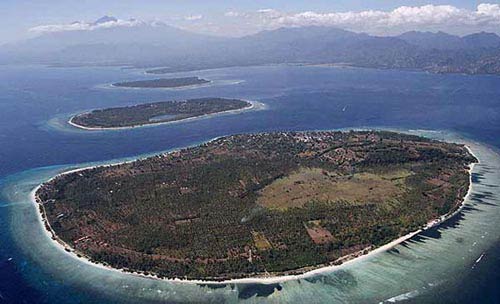
There are over 3,500 marine species living in the reefs and seas of Indonesia. ...

There are over 3,500 marine species living in the reefs and seas of Indonesia. In comparison to the Great Barrier Reef (1,500 species) and Red Sea (600 species), 25 % of all reefs in the world are in Indonesia.
The drop-offs, plateaus and slopes of the Gili's reflect a good cross-section of what Indonesia has to offer. Dive in and be fascinated by turtles, White-tip Reef Sharks, Cuttlefish, Moray Eels, Angel Fish, Ghost Pipefish and more.
Around the three Gili islands in the north-west of Lombok (Gili Air, Gili Meno, Gili Trawangan), are more then 15 different dive spots and there are new reefs being explored all the time.
Shark Point & Volkers' Golf Course
Shark Point, to the east of Gili Trawangan, is a popular dive spot in the mornings. This dive site consists of different levels (24m, 20m, 18m). It starts with a slope of hard and soft corals, the native territory of Green and Hawksbill Turtles.
The different levels are sandy areas with small coral locks -- the variety of underwater life is large, starting with schools of Trevally Napoleon Fish to White-tip Reef Sharks and Rays in the sandy areas, ending up with Ribbon Eels, Leaf Fish and even Mantas.
Volkers' Golf Course is about 500m east of Shark Point and starts at a depth of about 20m. It looks green like a golf course and is the best site to see Sharks, Schools of Mackerel and Doctor Fish.
Because of its depth and the sometimes very strong currents, it is a dive for advanced divers.
Meno Wall
Meno wall, off the west coast of Gili Meno, goes down to depths of 18m. It offers a lot of small coral fish like Lionfish, Soldier Fish, Gobies, crabs, as well as Wart Slugs and Nudibranches coming out of hiding. It is also called "Turtle Heaven" because of the many resident Hawksbill and Green Turtles.
Air Wall
Air Wall, to the west of Gili Air, is a very beautiful wall that, due to the soft coral cover, shines yellow-orange depending on the position of the sun. The highlight of this wall is a coral block at 22m in which Leaf Fish (Scorpion Fish) make their "home", surrounded by shrimps, Pipe Fish, White-banded Cleaner Shrimps and thousands of Glass Fish. Look into the deeper parts for White-tip Reef Sharks.
Coral Fan Garden and Basket Coral Garden
Also popular for morning dives are the two dive spots in the north of Gili Trawangan: Coral Fun Garden and Basket Coral Garden. In the first few metres you have the feeling of being in an aquarium -- schools of colored Fairy Basslets, Fusiliers, Banner Fish live here. Deeper, around the big coral and stone blocks, Groupers, Batfish, Trumpet Fish, hiding Octopus and Bearded Scorpion Fish. Look out to the blue, sometimes Eagle Rays, Mantas or Reef Sharks can be seen.
Manta Point
In the rainy season, when the water is rich with plankton, this dive site in the south of Gili Trawangan gives you the best chance to see Manta Rays. But even without the Mantas, you still have a good chance to see Reef Sharks and Turtles.
Nusa Lembongan
Lembongan Marine Park
Some of the best diving within easy reach of Bali, ...
Lembongan Marine Park
Some of the best diving within easy reach of Bali, the three island s of Nusa Peninda, Nusa Lembongan and Nusa Ceningen, separated by narrow straits through which the currents rush, has abundant marine life fed by the Indian Ocean swell.
Swarms of reef fish hang out underneath the moorings of the various cruise companies who use this site as a day-tripping destination. You can see a bizarre orange lionfish hiding with his friends the yellow spotted eel, flute fish and box fish. There's even a reef trail set up with large marked information plaques to help divers understand what they're looking at. An easy dive with lots to see, it's also a favorite for those that have been out of diving for a while, or want a long, relaxing dive.
Novice to Experienced. Lots of sharks swimming around, and this area is a great place and big chance to see the legendary Sun Fish or Mola-Mola from May until August. Other marine life includes Manta Ray, eel and nudibranches. Dropping away to 50 metres, a series of overhanging terraces hide White Tips and large Black Marbled Rays.
Lembongan Point
For those divers looking to satiate their thrill-seeking appetite, Lembongan Point is a wild ride. Currents up to 4 knots sweep you through your own action movie in fast forward. The strong nutrient-rich waters bring with it cooler temperatures, rich coral growth and an abundance of marine life. The fish seem to grow a little bigger out here.
Blue Corner (also known as Jurassic Park)
Intermediate to Experienced - 25 to 35 meters. Blue Corner Bali Diving Site is located off shore in Nusa Lembongan Islands on South East of Bali Island. This dive site is the only dive spot surrounding Nusa Lembongan Island, where waters can be cold and rough with strong currents. With its ripping, unpredictable current of 4+ knots, Blue Corner can be a wild ride for even experienced divers.
Unremarkable in terms of coral growth, the main reason this site is dived is that, in season, Mola Molas are often seen here. Blue Corner takes no prisoners and experience does not guarantee that a diver will come back without having soiled their wetsuit. Experienced only 30 to 40 meters deep.
Nusa Penida
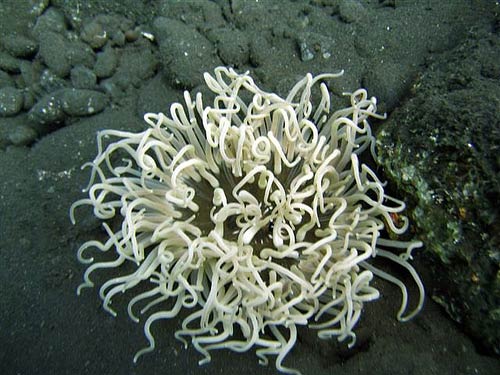
Nusa Penida is south of Bali. The area consists of three big islands: Nusa Penida; Nusa Lembongan, ...

Nusa Penida is south of Bali. The area consists of three big islands: Nusa Penida; Nusa Lembongan, the smaller one; and Nusa Ceningan, the smallest among these three main islands.
Nusa Ceningan
Nusa Ceningan lies between Nusa Penida and Nusa Lembongan. It is the big sister of Bali. With a speedboat, you can reach the island 30 to 40 minutes from Sanur. This island is also accessible by traditional boat, called a jukung (read it as joo koong), from Padang Bai, Candi Dasa and Kusamba.
The dive sites here are Batu Abah, Gamat Bay, Tugu, SD, Malibu, Manta Point, Ceningan, Karang Sari, batu Nunggul, Toyapakeh and Crystal Bay and Batu Abah point situated on south west of Nusa Penida Island and reachable by the speedboat from Sanur in 45 to 60 minutes depends on sea condition.
Because of rough waters and strong currents, this is not a well-serviced dive spot. Itis recommended only for expereinced divers with 50 or more dives and significant drift dive experience.
Gamat Bay
Gamat Bay is a tiny bay on this island; it is where the Gamat River ends. Precisely, it is located in Toyapakeh channel and directly in contact with Nusa Ceningan. The strong current usually occurs at low and high tide. This dive site is well known among local divers in Bali. To dive it, one must be an experienced diver with at least 50 dives or with advanced experience in drift diving. Gamat Bay is a drift dive with strong currents and rough waters. This dive site is one of the most challenging sites beside Blue Corner (Ental Point), which is also located in Nusa Lembongan, the nearby island.
Tulamben Bay
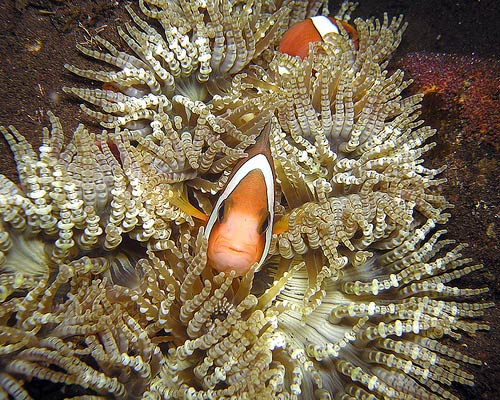
Tulamben has become Bali's most famous diving area and therefore it is ...

Tulamben has become Bali's most famous diving area and therefore it is where you are most likely to meet internationally recognised underwater photographers and writers. Tulamben Bay, like the rest of Bali, is situated in the richest marine bio-geography zone in the world. Being on the north-east coast, the bay receives very plankton-rich waters from the major ocean current that moves from the Pacific to the Indian Ocean. This, coupled with the fact that the three main dive sites provide totally different physical environments, gives Tulamben a stunningly diverse underwater ecosystem.
The beach is fist-sized black volcanic rocks that become sand in the shallows. This black sand does not provide the reflective properties of white limestone sand and, combined with the amount of plankton in the water, accounts for the relatively low visibility (12-25M). It does, however, provide a dramatic contrast, which brings out the colour of the corals, gorgonians, fish and other marine life. The 100s of macro-species that live here both blend and contrast beautifully with the sand.
Tulamben is a wonderful place to learn to dive and to learn about underwater life. There are occasional sightings of mola-mola (sunfish), manta rays, whale shark, tuna and other pelagics, but it is the permanent population of Tulamben that brings people here for the first and 100th time.
The USAT Liberty Shipwreck
The USAT is Bali's most famous dive site, created circa WWI. This cargo ship, which was equipped with guns for battle in WWII, was torpedoed by the Japanese off Lombok. Despite attempts to tow the ship to North Bali, it was taking on too much water so was semi-beached at Tulamben.
Over the years anything reusable was removed. In 1963, with the earth tremors from the last eruption of Mount Agung, the wreck slid further down the slope where it still lies -- as close to the beach as it can be and still be underwater.
The Liberty lies, approximately 30m offshore, almost parallel to the beach, on the sand slope. It is suitable for all levels of qualification and experience. The wreck lies in depths from 9 to 30m; the shallowest part of the wreck, where it touches the sand slope, is at 5-10m. Depths along the middle of the wreck are 16-20m. The lower edge of the wreck, furthest down the slope, is 20-28m at high tide. The wreck is 120m long. It's pretty broken up -- no penetration possible -- but you can still see the guns, toilets, boilers, anchor chain, etc. It is a lovely dive site, and possibly the world's easiest wreck to dive
The Drop-off/Wall
This dive site, created by a lava flow from Mount Agung, is at the opposite end of the bay from the USAT Liberty Wreck (about 15 minutes walk along the stony beach). The dive starts off on a steep sand slope with nudibranches, flounders, goby/shrimp sets. At 12m are sponges with many varieties of shrimp, leaf scorpion fish and crinoids, often with attendant Ghost Pipefish. Continuing round to the right, the slope develops into a reef with very impressive topography, becoming a vertical wall from 15m and descending to below 60m.
Visibility, best in the morning, is usually 15-20M (due to the amount of plankton in the water) and, because of the location, it is rare that there is a current, even a mild one.
The wall has profuse sponges, corals, black coral bushes and gorgonian fans. At 30M there's one that reaches 2M in width that we visit for the "deep dive" on advanced courses. The wall -- a lava spur -- then reverts to being a steep slope.
The Coral Garden
Running along the middle section of Tulamben beach is a shallow reef averaging 8-12m -- so also excellent for snorkeling-- of mainly table and fire corals interspersed with anemones as well as barrel and other sponges. The fish life, as with the Drop-off and the Wreck, is very diverse. It is here that you can see a surprising number of blue ribbon eels (the juveniles are black) and octopus. The variety of shrimp is surprising too along with the different anemone fish. The bigger fish seen here are bumphead parrotfish and black tip reef shark. The depth and location make the Coral Garden a very popular night dive on which you may see Spanish Dancers and flashlight fish.
The diving, in fact, actually extends much deeper than 12m, and if you carry on down the sand slope, you'll find barrel sponges with many surprises: juvenile emperor angelfish, two-spot lionfish, maybe a school of juvenile catfish, cleaning stations with shrimp and wrasse, a shoal of razor fish swaying in their hiding place. Continue along the slope towards the start of the Drop-off and you'll come to a dry river bed, scooped out into a bowl-shape, marked by ridges radiating outwards. These ridges are often the best places in Tulamben to find unexpected specimens. Although it is certainly not an area for divers looking for a profusion of marine life.
Flores
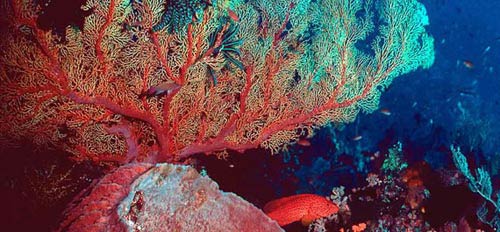
Discovered by Portuguese explorers in 1512 who named this island Capo de Flores or ...

Discovered by Portuguese explorers in 1512 who named this island Capo de Flores or Cape of Flowers, Flores is a long and mountainous island with astonishing landscapes, rain forests, dramatic volcanoes, deep ravines and picturesque villages.
Ancestral beliefs are still widespread in remote village. Flores has great collection in megaliths and cult houses. Mount Kelimutu, with its 3 crater lakes -- each with different colors of water -- makes Kelimutu one of the world's greatest natural beauties.
Diving in Flores gives you the perfect chance to add new, small fish and aquatic animals to your knowledge base since it is known for its endemic species. Although the combined effects of dynamite fishing and the earthquake and tsunami of 1992 caused damage to certain areas, including Maumere, the regeneration of the reefs here is cause for celebration.
The space cleared by these natural phenomena has allowed new corals to flourish, which has bought even greater diversity to the area. Once considered among Indonesia's finest, dive sites at Maumere in Flores are well on their way to a full recovery and provide some excellent and interesting diving.
At South Pangahbatang you may have some currents to deal with as you descend over the mass of large leather corals, present in numbers along a sloping wall that plateaus at around 28 m. Soft corals abound here too in impressive sizes and spectacular colours. The sight is enough to take your breath away but faces competition in this regard from the finning you may be doing to combat the current.
Just above the sandy floor you may catch sight of any number of sharks and eagle rays lazily hanging in the current, or garden eels easing themselves into the bottom holes as you pass above. All the while colour will surround you in the shallows, where you may find mantis shrimps, leaf fish and other small, interesting creatures.
Wai Terang
Just off the coast of mainland Flores you will find this Japanese World War II freighter lying on its side from a depth of 25 m up to about 12 m. The coral growth on this wreck has improved considerably over the years and now the old ship plays host to a fair number of hard and soft corals harbouring small fish life.
One thing you should try to avoid is kicking up the silt here, since a careless hand or leg in poor visibility could bring your skin into contact with one of the many resident lionfish, a sensation worse than a nip. Eels, cuttlefish and anthias are among the other pleasures to be had on what is a very rewarding wreck if not one that allows too much penetration.
Sumbawa
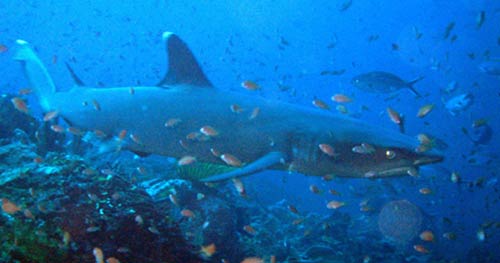
Sumbawa Island lies between Lombok to the west and Komodo Island to the east, and is dived ...

Sumbawa Island lies between Lombok to the west and Komodo Island to the east, and is dived as part of the Bali liveaboard cruises that run to and from Komodo.
The rugged, sprawling land mass of Sumbawa, with its many jutting and twisted peninsulas, forms plenty of protected bays for its islands along the north coast, such as Moyo, Sangeang, Tanjung Batuputih and Satonda. These sheltered and varied havens offer crystal-clear waters, deep and vibrant walls, and fertile, volcanic breeding grounds for some fantastic muck diving opportunities.
Often overlooked as just a port of call onto better dive sites to the east, Sumbawa diving has vast schools of trigger and butterfly fish, macro sightings of blue-ringed octopus, clown frogfish and nudibranches, numerous reef sharks and tunas in the deep walled sections, and topside attractions of volcanoes and bat colonies -- reasons enough for you to plunge deep and explore the underwater tapestry.
Diving Season
You can dive in Sumbawa all year round. Overall, the best diving conditions are from April to December. Liveaboard runs all year round.
Moyo Island
Angel Reef, west coast, 15km north of Sumbaw. Located just south of Panjang Reef, Angel Reef boasts healthy hard corals in its protected, shoreward shallows, and an abrupt vertical wall, plunging to well over 40 metres in depth. Making your way down the steep bank to the top of the wall, you'll encounter large and impressive schools of red tooth triggerfish, long-fin banner fish and rounded batfish. The striking wall is laden with colorful soft tree corals and a few hardy sheet corals. There is dynamite fishing here, as evidenced by the fractured, barren blast zones dotting the wall. Yellowtail tuna often streak past, hunting in the deep channels, and black-tip reef sharks are common predators at this large dive site at Moyo.
Sangeang Island
Located 45 km north east of Bima in east Sumbawa. Sangeang is a quite spectacular small active volcanic island. You can easily make out the lava ridges running down its steep green sides. The dive site is rather typical for this area, with good visibility, warm waters, and a mixture of soft and hard corals. Black feather stars, white stinging hydroids, anemones, leather corals and plate corals are all found in healthy numbers.
Fish common to the area are red-cheeked fairy basslets, pink anthias and yellow-bellied damsels. Basslets, or anthias, are seen in large congregations in shades of purple, violet, blue, orange, yellow, pink and green, hovering above hard corals. They are small, gregarious fish with forked tails. At the slightest hint of danger they quickly dart to refuge in the coral folds and branches. At 18m the reef breaks up over dark brown volcanic ash and sandy patches. Look carefully and you'll see volcanic bubbles escaping from the sea bed through air vents. Sometimes the visibility can be washed out as larger air exchanges disturbed the sediment on the sea floor.
Satonda Island - North of central Sumbawa
A small island with a large fresh water lake at its centre, Satonda is home to a large colony of fruit bats. Every evening at sunset these bats awake from their daylight slumber and leave the island in search of food. The sight of thousands of large bats departing on their forage in the darkening skies across the sea revives memories of old vampire movies. The small sheltered bay on the island makes for an ideal night dive and Bali liveaboard stop-over on the way to Komodo. The sandy bottom is a great opportunity for some muck diving and the sparse coral patches are home to a large array of critter creatures - ideal for macro enthusiasts.
With a keen pair of eyes, you may be luck to spot the extremely rare clown frogfish. About an inch in size, these rather odd-shaped creatures are bright yellow with dark red patches and are rarely seen to move. Heavily disguised, they are often overlooked or falsely identified as sponges. Other common creatures here are black, red and yellow crinoids, polecat flatworms, arrow crabs and banded boxer shrimp. The soft corals have an ultraviolet glow under torch light, lending the scenery an alien ambience.


